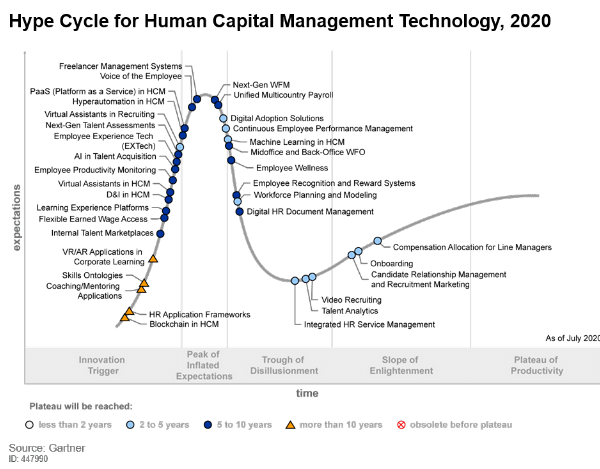As the geographic footprint of an organization increases, the complexity of managing payroll also increases. Large companies, especially MNCs with a presence across countries, are increasingly opting for a unified multi-country payroll system for various reasons.
In fact, according to estimates by Gartner, by 2024, 60% of global midmarket and large enterprises will have invested in a strategy to unify multi-country payroll.
 Gartner predicts it will take about 5 to 10 years for unified payroll to become mainstream.
Gartner predicts it will take about 5 to 10 years for unified payroll to become mainstream.
But what is a unified multi-country payroll system, and why are companies opting for one?
“Multi-payroll can be defined as a system that unifies the provision of payroll software/services across a minimum of two countries.”
There are several reasons why companies are opting to go for a single system rather than outsourcing their payroll or going for disparate systems that are more localized to specific regions.
Here is why.
-
The need to develop a standard EX (Employee Experience) for the entire workforce
With the pandemic heralding the arrival of a global workforce, companies are opting to develop an employee experience (EX) strategy that is uniform across geographies. When it comes to payroll, this means improving self-service capabilities and reducing turnaround time for payroll queries.
-
Demand for better analytics and reporting
For organizations, ensuring global payroll data is accessible via a centralized dashboard can be vital when making decisions regarding planning and analyzing headcount, budget costs, and so on.
Prominent multi-country payroll softwares such as PeopleStrong also helps maintain integrations with a range of workforce and collaboration softwares enabling leaders to look at the bigger picture with better reporting and analytics.
In an era where data is the new oil, HR leaders leveraging machine learning to analyze payroll data coming out of unified payroll systems can make strategic decisions impacting a company’s bottom line.
-
The need for a single version of the truth
For MNCs, multi-country payroll systems help provide a single version of the truth to HR and payroll teams by eliminating data redundancies and ensuring data backups.
With a unified payroll, companies can also eliminate a lot of inefficiencies and manual tasks with workflows and automation.
-
Mitigate risks around statutory compliance
Investing in a unified multi-country payroll strategy can mitigate risks around statutory compliances, regulations and optimize operational costs in the long run. This means reducing complexities when it comes to navigating issues such as SLA adherence, governance, local labor regulations, tax regulations, and so on.
-
Improvement in efficiency
According to the 2021 Global Payroll Complexity Index, 40% of companies still use spreadsheets, and 18% continue to use high-risk and largely non-compliant manual and paper-based activities as part of their payroll processing.
A multi-country payroll management system is a massive improvement from legacy systems and results in more cost savings and improved efficiency for payroll specialists and admins.
-
Ensures business continuity
A unified multi-country payroll system can ensure business continuity thanks to secondary data sites in case of failure in the primary data site, multiple delivery centers with similar setups, and so on under a unified operation rather than a combination of disparate payroll systems.
What should payroll specialists do before migrating to a unified payroll system?
- Develop a payroll strategy based on your geographic footprint, number of employees, and your existing/planned HR software investments
- Evaluate payroll service providers on their ability to improve payroll accuracy, ensure low latency and setup workflows for various scenarios
- Ensure the payroll service provider has a proven history of being vigilant when it comes to making regulatory changes mandated by authorities and can follow complex government rules
- Make sure the payroll system is technically robust and can accommodate scale/localization if your organization plans to expand its geographical footprint soon. It is crucial for HR leaders to think ahead and partner with a payroll provider that aligns with your organizational goals
- Check the ability of the payroll system to integrate with other HR/HCM/finance applications
Conclusion
Multi-country payroll transformation projects have received significant investment over the last year to help post-pandemic recovery and support hybrid work scenarios.
Gartner predicts that this will likely continue thanks to the ability of multi-country payroll systems to reduce operational costs, centralize reporting and analytics, and standardize processes, amongst other benefits.
With PeopleStrong multi-country payroll system, organizations can simplify enterprise payroll with accurate, automated, and 100% payroll-compliant processes.
With dedicated payroll specialists across Southeast Asian countries, we ensure 100% compliance to local laws and provide enterprise-grade security for your organization.
Find out how you can enhance your digital HR transformation journey with PeopleStrong
Book A Product Walkthrough

